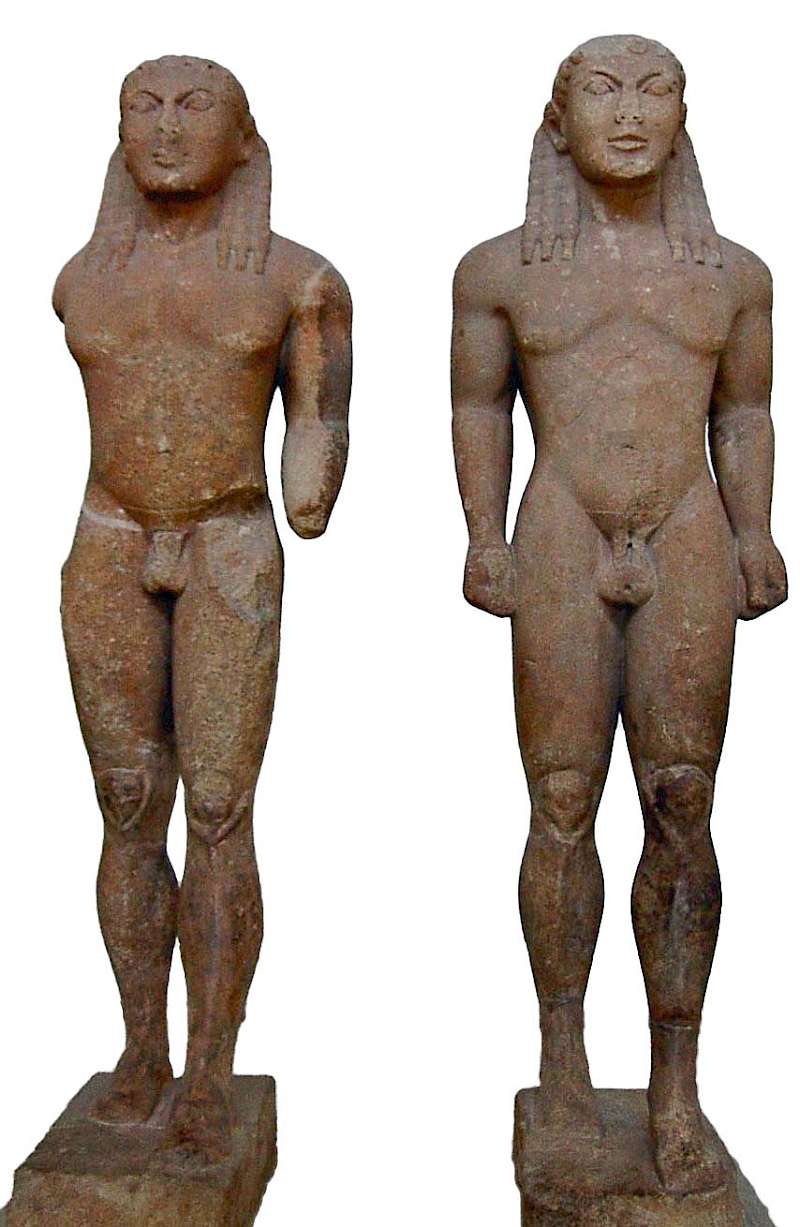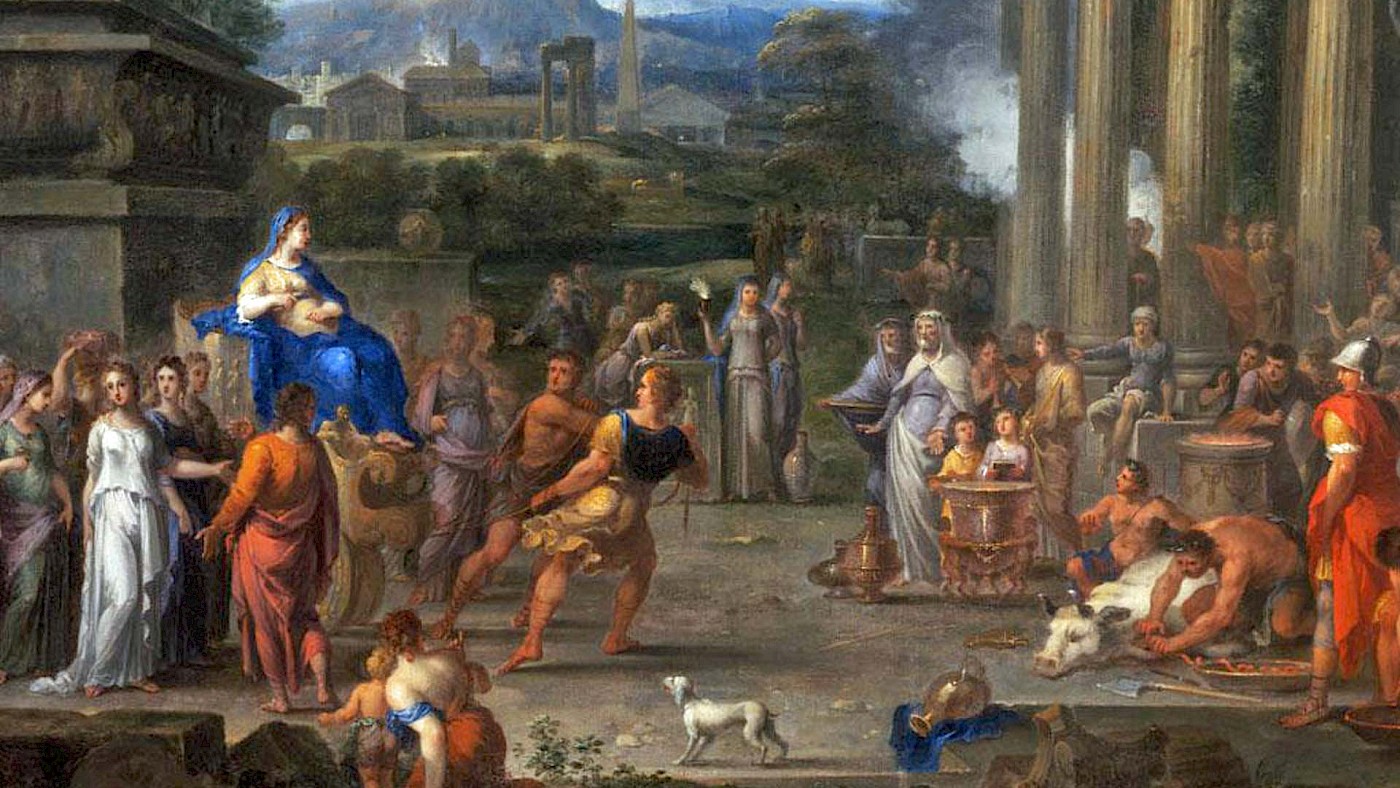The Historiai of Herodotus is a fantastic book filled with interesting stories. While the title is often translated simply as Histories, the Greek historia is acually better understood as meaning “inquiry”. The Historiai take as their subject the Persian Wars, but Herodotus devotes much time to researching, visiting, and reporting back stories about the Greeks, as well as their enemies, the Persians, including tales about and from the people the Achaemenid Empire had conquered.
As such, Herodotus isn’t really the “father of history” so much as he’s the world’s first investigative reporter. He wasn’t contend to just write about events that happened: he wanted to understand the motives behind people’s actions and to get an idea of the culture and worldviews of people who weren’t Greek. As a result, large parts of his work are devoted to studies of the ancient Egyptians, the Scythians, and the Lydians, who had all been conquered by the Persian behemoth.
At King Croesus’ court
According to Herodotus, the great Athenian statesman and poet, Solon, once visited Croesus, the king of Lydia. Croesus boasted about his wealth and power and asked Solon to confirm that he, indeed, was the most fortunate of men. Solon disagreed, however. He instead named other people whom he thought were more fortunate. Among the people he listed were two young Argives called Cleobis and Biton.
The story, as purportedly told by Solon to Croesus, is fairly short, so I will cite the passage from Herodotus directly, using the translation from Perseus (1.31):
Cleobis and Biton. They were of Argive stock, had enough to live on, and on top of this had great bodily strength. Both had won prizes in the athletic contests, and this story is told about them: there was a festival of Hera in Argos, and their mother absolutely had to be conveyed to the temple by a team of oxen. But their oxen had not come back from the fields in time, so the youths took the yoke upon their own shoulders under constraint of time. They drew the wagon, with their mother riding atop it, traveling five miles until they arrived at the temple.
When they had done this and had been seen by the entire gathering, their lives came to an excellent end, and in their case the god made clear that for human beings it is a better thing to die than to live. The Argive men stood around the youths and congratulated them on their strength; the Argive women congratulated their mother for having borne such children.
She was overjoyed at the feat and at the praise, so she stood before the image and prayed that the goddess might grant the best thing for man to her children Cleobis and Biton, who had given great honor to the goddess. After this prayer they sacrificed and feasted. The youths then lay down in the temple and went to sleep and never rose again; death held them there. The Argives made and dedicated at Delphi statues of them as being the best of men.
Cleobis and Biton had performed a remarkable deed, were celebrated for it, and their reward was death? To the modern mind (i.e. from an “etic” or outside point of view), dying doesn’t seem a particularly good reward. King Croesus perhaps shared a similar point of view, since he was incredulous that Solon didn’t consider him to be fortunate. But Solon explained that it was impossible to judge whether a person was fortunate or not while still alive.
From an ancient Greek (or “emic”) perspective, Solon’s reply makes sense. The ancient Greek afterlife was fairly grim: most people’s shades (i.e. souls) would wander around the underworld a literal shadow of their former selves. There was little chance of reward after death. So whatever immortality a Greek person wished to attain had to be accomplished during life, by performing great deeds that would ensure they would be talked long after their bones had turned into dust. The two young Argives had performed a feat so magnificent, to the acclaim of so many, that their greatest reward was indeed to die at the peak of their success, ensured of their renown.
Of course, within the context of Herodotus’ work, the exchange between Solon and Croesus fits so perfectly that the writer must almost certainly have been spun it out of whole cloth. Solon probably never did visit Lydia, and it seems even less probable that he had actually spent time with King Croesus himself.
But Herodotus didn’t let the truth get in the way of a good story. He knew that Croesus’ mighty kingdom had fallen, swallowed up by the ever-expanding Persian Empire, and that the king himself had suffered an ignominious end, meaning that he most definitely did not die a fortunate man. Herodotus’ Greek audience would certainly have appreciated the tale.
Statues of Cleobis and Biton?
According to the story in Herodotus, the Argives dedicated statues of the Argive youths at Delphi. Two large, freestanding statues of bulky, young men were unearthed in Delphi, and dated to ca. 580 BC, or around the time that Solon was active (i.e. first half of the sixth century BC). Naturally, they were almost immediately thought to represent Cleobis and Biton.

However, this identification is most probably wrong. As luck would have it, there are inscriptions along the base. They mention the sculptor’s name, which has been reconstructed as Polymedes of Argos. The remainder is very fragmentary and more difficult to reconstruct; one scholar has suggested part of it spelled out the name “Biton”, but this is highly conjectural, to say the least.
More likely, the statues represent the Dioskouroi, Castor and Pollux. In Greek mythology, Castor and Pollux are brothers of Helen and Clytemnestra, but they died before the outbreak of the Trojan War. Though born in Sparta, the two heroes were popular throughout the Peloponnese and even the subject of cult.
Contrary to the opinion of most archaeologists, the Delphi Museum continues to identify the pair of statues as Cleobis and Biton.
